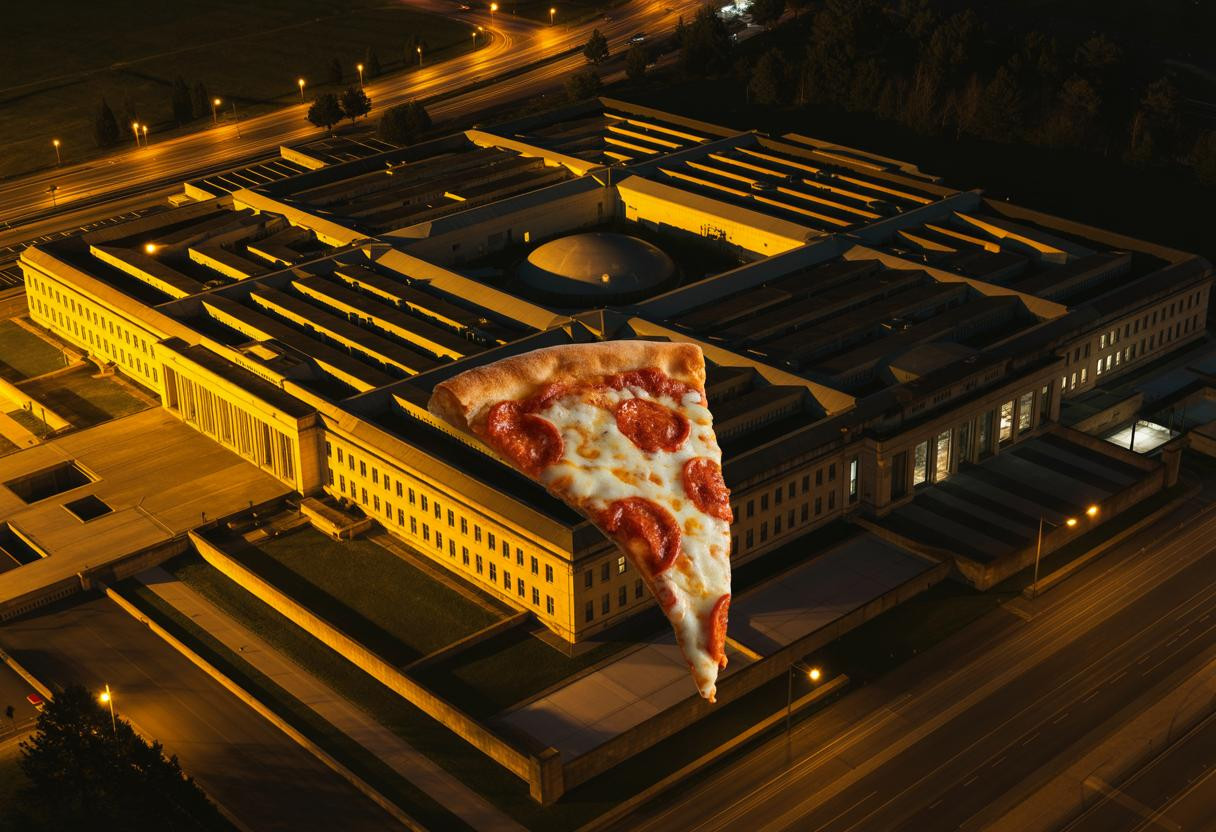On April 13, 2024, as Iran launched its unprecedented drone and missile attack on Israel, an unlikely intelligence indicator began lighting up across Washington D.C. – pizza orders near the Pentagon, White House, and Defense Department suddenly spiked by extraordinary levels, signaling that America’s national security apparatus had shifted into crisis mode.
This phenomenon, known as the “Pizza Meter,” represents one of the most fascinating examples of open-source intelligence (OSINT) in action. When government officials work around the clock during international crises, they need food – and lots of it.
The cold war origins of pizza intelligence
The Pizza Meter isn’t a modern invention. During the Cold War, Soviet intelligence operatives coined the term “Pizzint” (Pizza Intelligence) to monitor sudden surges in food deliveries to U.S. government buildings as early warning signals for American military actions.
Historical precedents validate this unconventional approach. The CIA famously ordered 21 pizzas in a single night before Iraq’s invasion of Kuwait in 1990. Similar spikes occurred before U.S. military interventions in Grenada (1983) and Panama (1989).
What makes this intelligence method particularly intriguing is its accessibility. Unlike classified information, pizza delivery patterns are observable through public platforms like Google Maps, which display real-time restaurant activity levels.
How modern analysts track government crisis response
Real-time monitoring techniques
Today’s OSINT analysts use sophisticated methods to track the Pizza Meter. They monitor Google Maps activity indicators around government buildings, screenshot busy restaurant notifications, and track social media reports from establishments like Papa John’s and Domino’s within two miles of critical facilities.
During Iran’s April 2024 attack, analysts documented unusually high foot traffic at Pentagon-area pizzerias through crowd-sourced observations on X (formerly Twitter) and Reddit. Screenshots showed “busier than usual” indicators on multiple delivery platforms simultaneously.
Cross-referencing multiple signals
Smart analysts don’t rely solely on pizza data. They integrate these observations with other OSINT indicators like unusual flight patterns, increased rideshare activity near government buildings, and energy consumption spikes. This multi-signal approach, similar to the dangers of overreliance on single indicators, helps filter out false positives from routine late-night meetings or training exercises.
The psychology behind crisis-driven consumption
The Pizza Meter works because of fundamental human behavior patterns. High-stress situations trigger specific psychological responses, including increased caloric intake and preference for familiar comfort foods. Government workers facing international crises often work 16-20 hour shifts, creating predictable consumption spikes.
Research in behavioral psychology insights confirms that stress-induced decision-making often defaults to convenient, high-energy food choices – exactly what pizza delivery provides during midnight strategy sessions.
Modern applications and future evolution
Intelligence analysts predict that AI-augmented platforms will soon automate Pizza Meter monitoring, creating sophisticated early-warning systems that cross-reference delivery data with satellite imagery, financial transactions, and social media activity patterns.
However, this evolution raises significant concerns. As highlighted in discussions about digital culture and social media dynamics, the risk of prioritizing viral spectacle over substantial intelligence grows as these indicators become more mainstream.
Adversaries could potentially exploit pizza delivery patterns to seed confusion or create false signals, turning this intelligence tool into a weapon of information warfare.
Why this matters for crisis awareness
The Pizza Meter demonstrates how ordinary data can reveal extraordinary insights about global events. While not foolproof, it provides real-time crisis detection capabilities that complement traditional intelligence methods. For citizens monitoring international tensions, tracking these patterns offers a unique window into government response levels during developing crises.
As geopolitics becomes increasingly digitized, unconventional indicators like the Pizza Meter may evolve into standardized early-warning systems – but only if rigorously validated against traditional methods and protected from manipulation.
